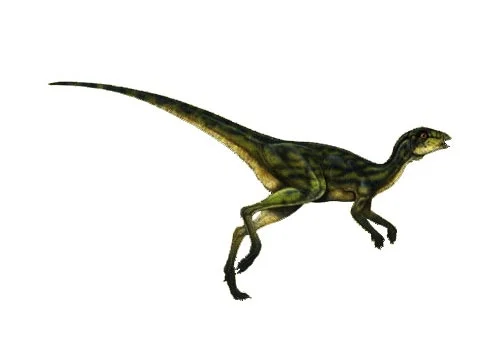Hypsilophodon (Hypsilophus-tooth)

hip-sih-loh-foh-don
Thomas Henry Huxley - 1869
Herbivore
Estimated 1.8 meters long
Euornithopod
Hypsilophodon foxii (type)
England, Spain
Early Cretaceous, 125 million years ago
Hypsilophodon Facts
Hypsilophodon, also known as the “Hypsilophus-tooth,” was a small herbivorous dinosaur that lived during the Early Cretaceous period, around 125 million years ago. It was a member of the ornithopod group of dinosaurs, which includes other famous dinosaurs like Iguanodon and hadrosaurs.
Hypsilophodon was a small dinosaur, measuring only about 6 feet (1.8 meters) in length and weighing around 50 pounds (23 kilograms). It had a slender, agile body, long legs, and a long, pointed tail. Its teeth were small and leaf-shaped, adapted for slicing through tough vegetation.
Fossils of Hypsilophodon have been found in England, and the dinosaur was first described in 1849. Since then, many additional fossils have been discovered, allowing scientists to learn more about its anatomy and behavior.
Hypsilophodon was likely a fast runner, able to outrun predators like small theropod dinosaurs. It may have lived in small herds and fed on a variety of plants, including ferns, cycads, and conifers.
Hypsilophodon is a relatively well-known dinosaur due to its abundance of fossil material, and it has been the subject of many scientific studies. It provides important insights into the diversity and ecology of dinosaurs during the Early Cretaceous period, and is an important example of the ornithopod group of dinosaurs.



